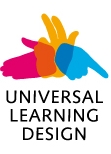1 Introduction
Digital Versions of scientific publications like papers, thesis, dissertations are usually published as PDF documents. For screenreader users these documents have to be made accessible. In this context screenreader accessible footnotes are a special challenge. There is a conflict between the requirements based on accessibility standards – like the PDF reference (ISO 32000-1) and the new PDF accessibility standard PDF/UA (ISO 14289-1) – and the real-life accessibility for users of screenreaders that do not support these standards yet. In this paper we want to clarify the requirements for accessible footnotes in PDF documents according to available accessibility and usability standards and according to available screenreaders. And we suggest a practical compromise how footnotes should be made accessible as long as conforming screenreaders are not available.
2 The State of the Art
We evaluated the newest versions of mainstream authoring tools and how they create footnotes in accessible PDF documents. The Result: Neither office programs like Microsoft Office 2010 and LibreOffice/OpenOffice nor layout programs like Adobe InDesign CS 5.5 can create footnotes in PDF documents that are conforming to accessibility standards or accessibility supported by available assistive technologies.
The problems are:
-
how to identify the note referrer and the note
-
the place of the note in the tag tree (inline, separate block level element)
-
how it is possible for a screenreader user to jump back to the note referrer
3 Our Approach and results
Our starting point are the available document and accessibility standards: ISO 32000-1 (PDF 1.7), ISO 14289-1 (PDF/UA), Web Content Accessibility Guidelines (WCAG) 2.0. We describe and concretize the requirements for accessible PDF footnotes according to these standards. Visually there is a note referrer in the text and a place for the corresponding note – for example at the end of the page or document. In the document structure the note tag as an inline level element is positioned at the same place where visually the note referrer is located. A note referrer is not needed in the tag tree anymore. The problem is, that there is no AT yet which supports that best practice solution. The goal is an implementation guideline for developer of conforming viewers and assistive technologies.
Our second approach consists in describing a real-life solution for accessible PDF footnotes based on screenreader usability. With support of the Swiss foundation „Access for all“ and their blind experts we tested different ways of representing footnotes in an accessible PDF document. We differentiate between the visual presentation and the structural representation of the footnotes. The solution that footnotes appear visually in the usual manner at the bottom of a page, but in the tag tree at the end of the chapter or document marked as a numbered list with a heading “endnotes” turned out as best practice.
The goal is a practical guideline for authors and creators of accessible PDF documents.
The best way for conforming authoring tools would be to support both ways and let the author decide which way he wants to choose.
4 The Impact and future Work
We hope that this paper can be a first step towards a better support of accessibility standards by assistive technologies and by authoring tools.
References
Adobe Forums: accessible footnotes: http://forums.adobe.com/message/2644226.
Page, Ted. Making PDF footnotes accessible: http://www.pws-ltd.com/sections/articles/2010/pdf_footnotes.html.
PDF Reference / ISO 32000-1: http://www.adobe.com/devnet/pdf/pdf_reference.html.
PDF/UA (Universal Accessibility) / ISO 14289-1: http://pdf.editme.com/PDFUA.
Foundation „Access for all“, a Swiss non profit organization: http://www.access-for-all.ch./en.html.
WCAG 2.0-Techniques for PDF: http://www.w3.org/WAI/GL/WCAG20-TECHS/pdf.html.
Web Content Accessibility Guidelines WCAG 2.0: http://www.w3.org/TR/WCAG/.









